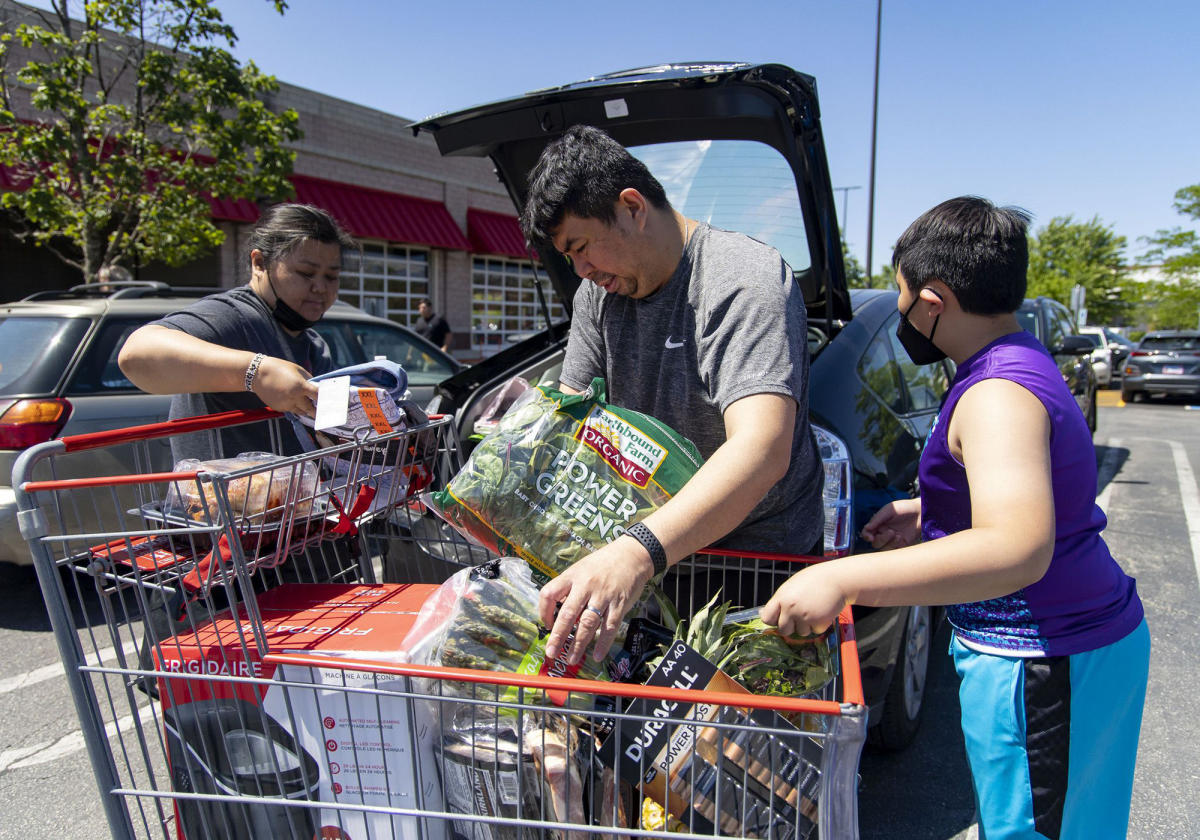In the pandemic’s early years, Mary and her husband had their groceries delivered from Whole Foods every week, paying $35 or so for each drop-off to their home in Streeterville. They’re well off — both are physicians — and they had a newborn and a toddler, making in-person shopping even more of a chore.
They stopped that splurge in 2022, when food supermarket prices went up the fastest in more than 40 years. Though they probably could have afforded to continue ordering from Instacart, their food bill “hit a point where we thought this is just ridiculous,” Mary said. “This was not a good use of our money.”
Throughout Chicagoland and the rest of the country, consumers are recoiling from the run-up in grocery prices and increasingly looking for ways to save money in the checkout lane. Two-thirds of American adults say their standard grocery cart costs more than it did a year ago, and roughly half of consumers have changed their shopping habits to save money, according to a new Harris Poll.
Nearly three-quarters of today’s budget-conscious shoppers’ new routines include buying things on sale or with a coupon, according to our poll, making it the most popular cost-saving measure we tested. A similar percentage chooses lower-priced store brands over name brands. And majorities of those with new shopping habits comparison shop, buy different-sized products that are cheaper, forgo organic food and limit purchases to essential items. Almost half now shop at different stores.
The findings are remarkably similar across income levels: Among adults taking actions to lower their grocery bills, for instance, 71% in households with incomes less than $50,000 a year say they’re buying discounted products today compared with 74% with annual incomes of $100,000 and up.
That so many people are shopping differently might seem surprising given the most recent government data, which showed the cost of food at home rose just 0.1% from June to July and was up only 1.1% from a year earlier. Inflation may have peaked at 11.4% in 2022, but because its effects linger even after price pressures abate, it remains top of mind for many Americans. After all, what had cost $100 at the end of 2019 now costs almost $130.
Rising grocery prices are doing more than straining the budgets of middle-class and even affluent households. The Greater Chicago Food Depository says its food banks and pantries served 28% more people last spring than they did a year earlier, a surge it attributes to inflation as well as the rollback of pandemic relief programs. As a result, the nonprofit estimates, 1 in 5 households with children in metro Chicago were food-insecure in the second quarter, a percentage last recorded in the first months of the pandemic in 2020.
There’s a takeaway, too, for Mayor Brandon Johnson, whose allies in the City Council are reviewing 16 tax increases to pay for expanded social services. Yes, more people are in need, but it might be wise not to proceed with a sales tax on groceries — one of the options on the table — since it would disproportionately affect lower-income families for whom the cost of food consumes a larger portion of their budget.
The repeat hits to the wallet also go a long way to explain why both Vice President Kamala Harris and former President Donald Trump have recently focused on food costs.
By now, Americans have had time to recalibrate most of their price expectations. Still, grocers manage to occasionally shock them, reinforcing their efforts to hold back.
Angela, a hair stylist who lives with her art-director husband and their teenage daughter near Lincoln Square, was taken aback the other day when she saw a two-pack of chicken breasts at Jewel-Osco selling for $15. “That is crazy,” she said. But because it was on a buy-one-get-one-free sale, she ended up buying the twofer.
To save more money for retirement, Angela, 50, buys in bulk for meals she plans out for three weeks ahead. She buys fresh fruit only when it’s in season and cheaper. She has cut back on red meat. She gardens and cans her own vegetables. And she comparison shops online and then shuttles to four stores — Jewel, Mariano’s, Aldi and Costco — to get the best deals.
Even so, she conceded, there have been times when they haven’t hit their monthly savings goal. “Everything costs more today,” Angela said.
Mary, 35, also finds herself becoming more frugal. While she’s still loyal to Whole Foods, she’s often choosing conventionally grown fruits and vegetables over premium-priced organics, buying less meat and stocking up when things are on sale. “I don’t know if I’m doing it explicitly to save money each time,” she said, “but I’m more judicious about what I buy.”
The good news for consumers is inflation is cooling. The bad news is the job market is cooling as well, which could encourage employers to skimp on pay raises needed to catch up with rising prices. For more and more households, penny-pinching seems here to stay.
_____
Will Johnson is the Chicago-based CEO of The Harris Poll, one of the world’s leading public-opinion research firms.
_____

